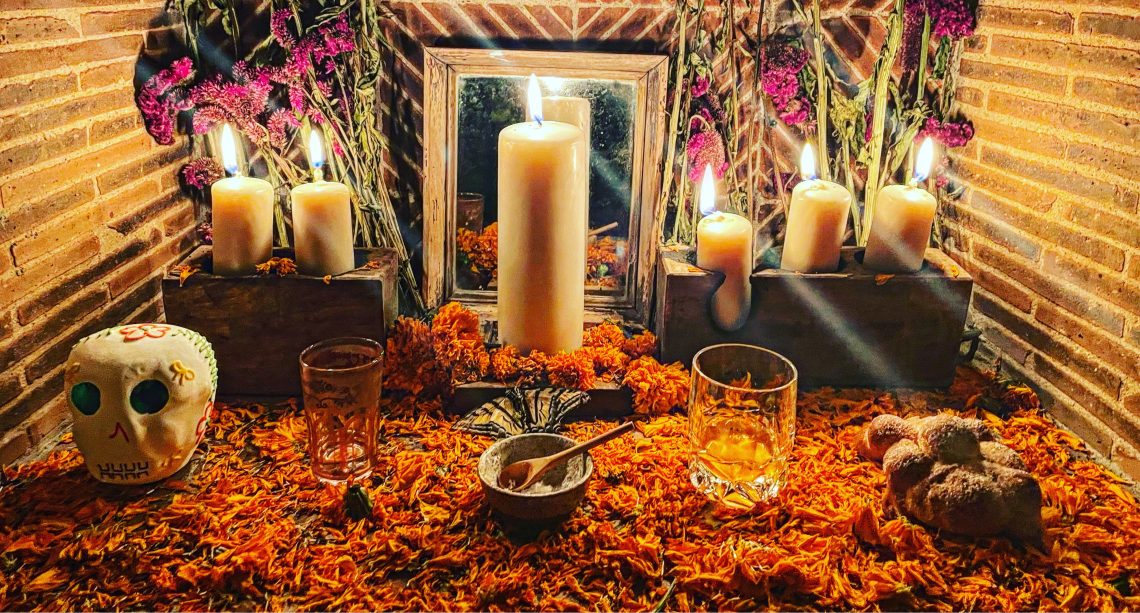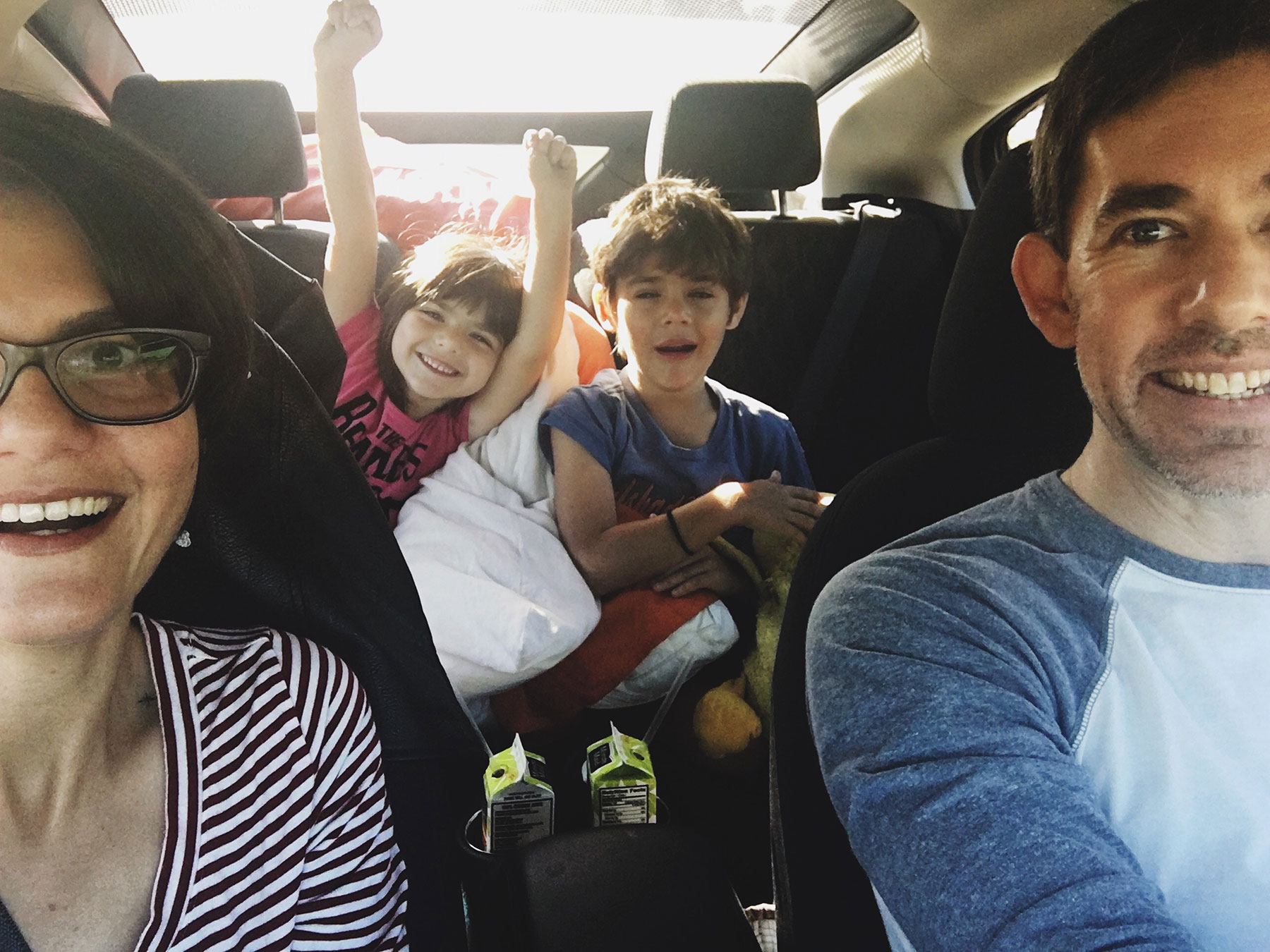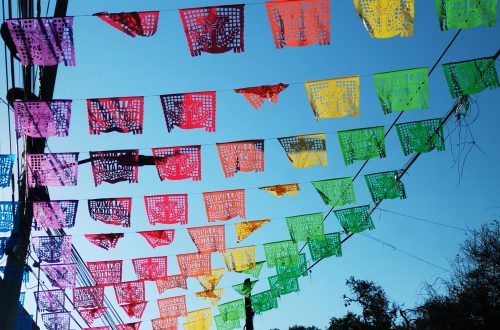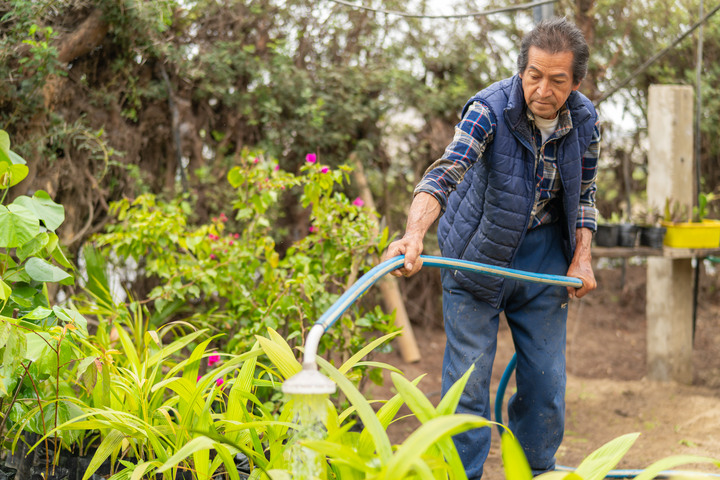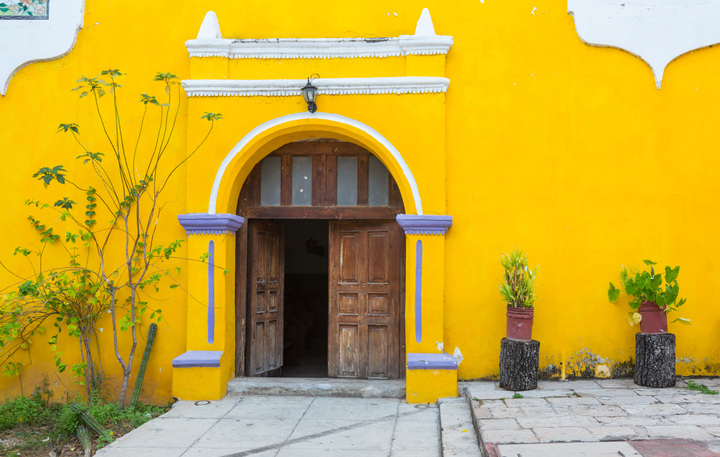As the echoes of Independence Day fireworks fade, sugar skulls and cempasúchil appear, meaning the country’s most spectacular celebration is on the way.
From reverent to rowdy, here are our picks for Día de Muertos moments that make this season pure Mexican magic…
Valley of the Catrinas– October – November, Atlixco, Puebla
Since 2021, the magic town of Atlixco has transformed into an open-air gallery of monumental Catrinas. This year’s theme honors the working hands at the heart of Mexico. Over 20 towering skeleton figures representing tortilla makers, bakers, artisans, flower growers, and organ grinders. Plus plenty more festivities all week long.
Desfile de Alebrijes – October 18, Mexico City
Don’t miss Mexico City’s iconic Desfile de Alebrijes, where fantastical, hand-crafted creatures parade down Paseo de la Reforma. Starting at 12:00 p.m. from the Independence Monument, the vibrant parade winds through the heart of the city and ends in Alvaro Obregón. After the parade, the alebrijes will remain on display for two weeks, showcasing the incredible artistry of Mexican artisans.
Calaverandia – Day of the Dead Theme Park – October 22 – Early Nov, Guadalajara
Step into the world’s first Día de Muertos theme park! Calaverandia transforms Guadalajara into a neon-lit wonderland where tradition meets modern spectacle. From glowing marigold tunnels to dancing Catrinas, interactive altars to dazzling light shows, this family-friendly experience blends contemporary art with deep-rooted Mexican traditions.
Festival de las Calaveras October 24 – November 2, Aguascalientes
Aguascalientes goes all-out for Día de Muertos with the Festival de las Calaveras, honoring the iconic La Catrina figure created by hometown artist José Guadalupe Posada. This isn’t your quiet, contemplative celebration; it’s a full-blown carnival of the dead! Expect massive parades, live concerts, art installations, and theatrical performances taking over the city. If you like your Day of the Dead with a party atmosphere, this is your spot.
Mega Catrina Parade – October 26, Mexico City
Forget watching from the sidelines, be part of the parade! While the Bond film-inspired Desfile de Muertos parade is the most well-known, La Marcha de las Catrinas welcomes thousands of locals and visitors alike. Get your face painted, don your Catrina finery, and join in! The parade kicks off at 6:45 p.m. from the Ángel de la Independencia.
Festival de Vivos y Muertos – October 26, San Miguel de Allende
The 10th annual Festival de Vivos y Muertos marks the start of Día de Muertos celebrations in San Miguel. At Parque Benito Juárez, children and families can take part in hands-on workshops to create art, Catrinas, calaveras, and altars, while enjoying performances, exhibitions, and interactive activities.
The festivities continue with two spectacular Catrina parades, on November 1st and the grand municipal Desfile de Muertos y Catrinas on November 2nd at 6 p.m., featuring towering mojigangas (papier-mâché puppets), brass bands, followed by a folkloric ballet performance at 8 p.m. in the Jardín Principal.
Festival de Tradiciones de Vida y Muerte – October 30 – November 3, Xcaret, Riviera Maya
At Xcaret Park, Día de Muertos unfolds as a vibrant fusion of tradition and spectacle. This year’s edition honors the state of Michoacán with its cuisine, crafts, and folklore, alongside evening concerts, theater, dance, and candlelit altars. It’s one of Mexico’s most immersive and artistic celebrations of life and death.
Mitla & Pan de Muerto Experience – October 30, Oaxaca City
Just outside Oaxaca City, the sacred town of Mitla, “Place of the Dead” in Nahuatl, offers a unique and spiritually meaningful place to experience Dia de Muertos. Once a major Zapotec religious center, Mitla was believed to be a portal between the living and the dead. On October 30, visitors can wander these ancient ruins before heading to a local bakery for a hands-on Pan de Muerto decorating workshop. We suggest researching and choosing the tour that’s the best for you and your budget.
(We’re not affiliated with this tour company. We’ve just heard good things about them!)
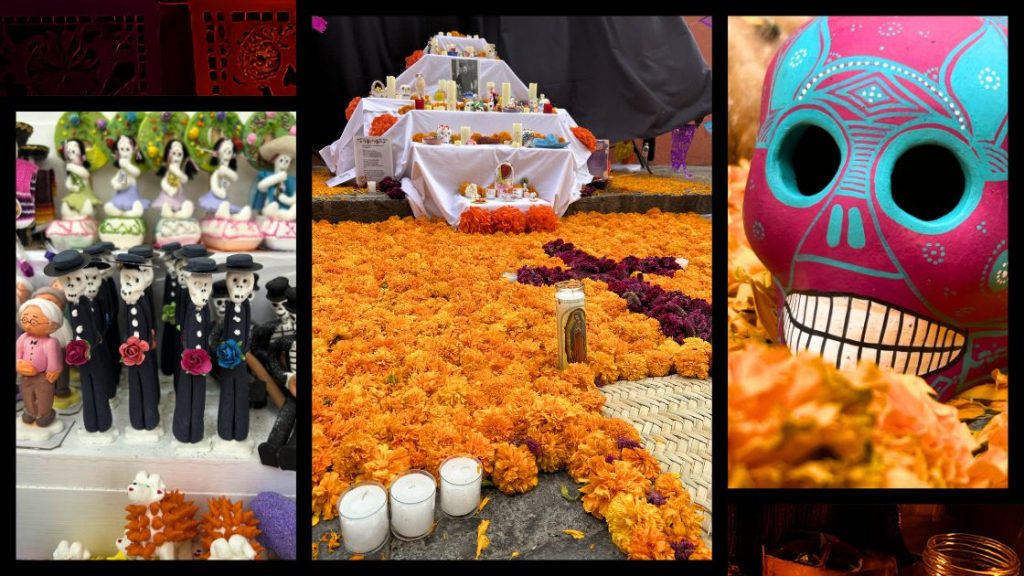
Festival de la Luz y la Vida – October 30 – November 2, Chignahuapan, Puebla
The mountain town of Chignahuapan, Puebla, glows with more than a thousand torches during the Festival de la Luz y la Vida. It’s a breathtaking procession of light that honors the journey between life and death. Locals carry candles from the town’s church to Lake Chignahuapan, where the night ends in music, dance, and reflections over the water.
Paseo de las Ánimas (Passage of the Souls) – October 31, Mérida
The Paseo de Ánimas in Mérida is the heart of Hanal Pixán, the Yucatecan version of Día de Muertos. The parade starts at 6 pm from the General Cemetery, which symbolizes the journey of the souls from the afterlife back to the world of the living. People dress in traditional white clothing, faces painted as calaveras (skulls). Lining the route, you’ll find altar displays, stages with regional music, traditional food for sale, and art exhibits. Mérida celebrates with parades, cultural events, and dances across the city, but October 31 is the night you absolutely can’t miss!
Día de Muertos Caminos de Michoacán Experience – October 31 – November 2, Michoacán
Michoacán’s Día de Muertos celebration is legendary, and this year’s “Caminos de Michoacán” will take you through the heart of it all. From sugar skulls to flower-covered altars, this is where ancient customs bring the streets to life. Highlights include visiting Pátzcuaro, where the Plaza Vasco de Quiroga hosts artisan markets and traditional festivities, and the famous Janitzio Island Along the way, towns like Tzurumutaro, Cucuchucho, and Isla de Pacanda offer quiet, deeply moving tributes with music, marigolds, and ancestral ritual. Guided routes focus on Purépecha customs, making this one of the most meaningful and memorable ways to honor the dead in Mexico.
Here are all the must-place to visit.
Noche de Muertos on Isla Janitzio – November 1-2, Janitzio Island, Michoacán
One of Mexico’s most breathtaking Día de Muertos traditions, boat flotillas carrying flickering candles glide across Lake Pátzcuaro to Isla Janitzio. On the island, families gather in the cemetery, richly decorated with marigold flowers and candles, the focal point of the island’s night-long vigils and commemorations. Make sure to dress warmly for the trip across the lake (many people wear coats, hats, and gloves).
It’s moving and unforgettable, but logistically demanding: boats run on tight schedules, and accommodation is limited. It is reachable only by boat (25 minutes from the docks of San Pedrito, General or Las Garzas).
Day of the Dead Celebrations – October 31 – November 2, Oaxaca
Oaxaca’s streets are filled with festivities and elaborate ofrendas lining the main streets around the zocalo. However, for a more intimate experience, try venturing out to pantheons in the nearby pueblos. Santa Cruz Xoxocotlán (20 minutes away) transforms its cemetery into a sea of candlelight on October 31, creating a luminous vigil.
In Santa María Atzompa (30 minutes from the city), the town’s famous pottery tradition takes center stage, with handcrafted ceramics adorning altars and graves in a beautiful blend of artisanal heritage and ancestral remembrance.
Día de los Muertos Parade – November 2, Puerto Vallarta
The parade will begin at 5:00 PM in the Colonia 5 de Diciembre neighborhood, continuing through the historic streets of El Centro before concluding at Los Arcos del Malecón. In PV, you can also see the world’s tallest Catrina at a jaw-dropping 28.15 meters (92.36 feet) that towers over the Malecón. Yes, it’s a Guinness World Record holder, and yes, you need to see it!
